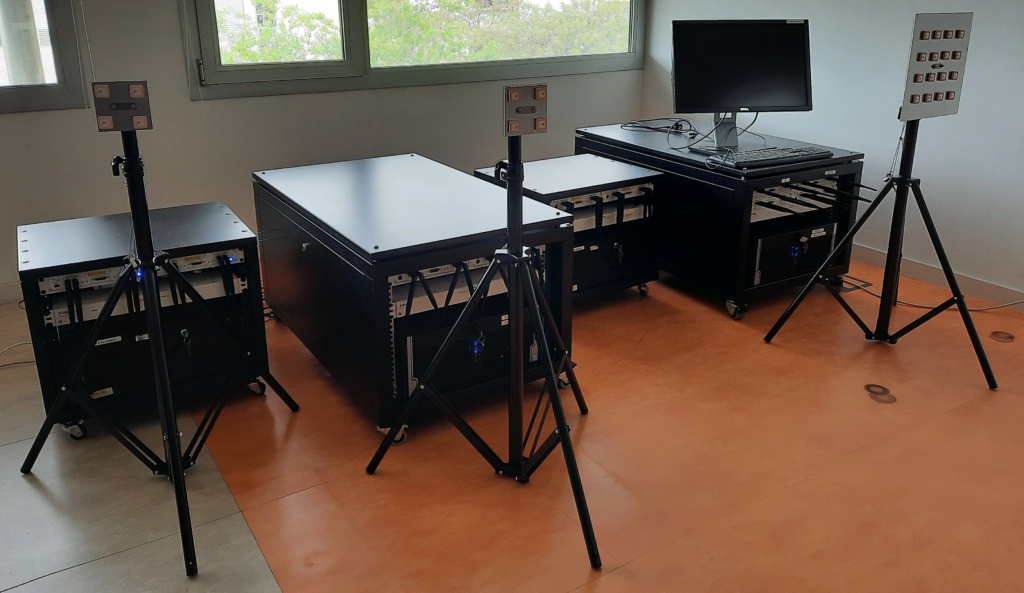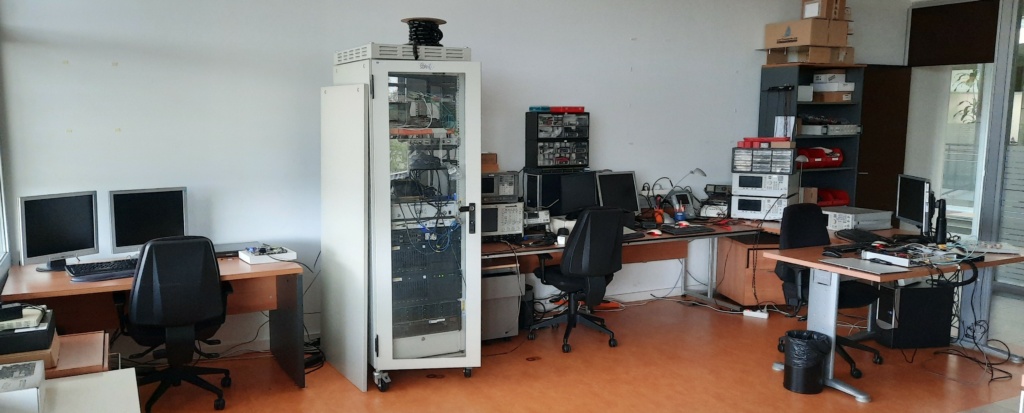Overview
The Signal and Information Processing laboratory hosts the Artificial Intelligence Wireless Experimental Platform and the GESTALT testbed.
AI Wireless Experimental Platform
A total of 4 workstations, part of which are equipped with modern GPUs (GeForce GTX 3090), are mounted on wheeled racks to allow for different indoor multi-terminal configurations. Besides vertical dualband antennas, several MIMO antenna arrays are available for experimental research.
This set of hardware equipment allows to conduct experimental research towards the development of powerful AI/ML algorithms for the physical layer of 6G communication systems. Specifically, the following lines of research are covered by our experimental platform:
- End-to-end learning of physical-layer functions, error-correcting codes, and coded modulation
- Data-driven beamforming, MIMO schemes and user clustering algorithms
- Massive random-access systems for machine-type communications based on reinforcement learning
- Emergent communications and automated MAC protocol learning
- Over-the-air computation

GESTALT® facilities and testbed
The GESTALT® Testbed is a facility for research and development with positioning systems based on a software-defined GNSS receiver released with an open-source license. Its unique features allow rapid prototyping and experimentation with an unprecedented degree of freedom.
It consists of a set of GNSS antennas (all qualities, sizes and prices) receiving signals broadcast by actual satellites; a GNSS signal generator for controlled testing; a set of professional GNSS receivers (for reference); a set of RF front-ends (all qualities, sizes and prices), a host computer allowing remote operation, and GNSS-SDR®, an open source software-defined GNSS receiver that implements the whole processing chain from the output of a RF front-end up to computation of GNSS observables and position fixes (Source code available at: https://github.com/gnss-sdr/gnss-sdr).
A rack in the CTTC lab gets the antenna(s) input(s), connects them to the RF front- end(s), and the sampled signal is transferred to the host computer, which is executing the software- defined GNSS receiver. This configuration allows for rigorous, transparent, fair and replicable testing of signal processing algorithms and receiver architectures.

The testbed includes hardware, software, and networking components, constituting a state-of-the-art facility for research and development of next-generation’s GNSS receivers.
All those facilities and tools allow rapid prototyping of new strategies and subsystems, and their fast deployment in industry-grade form factors.
